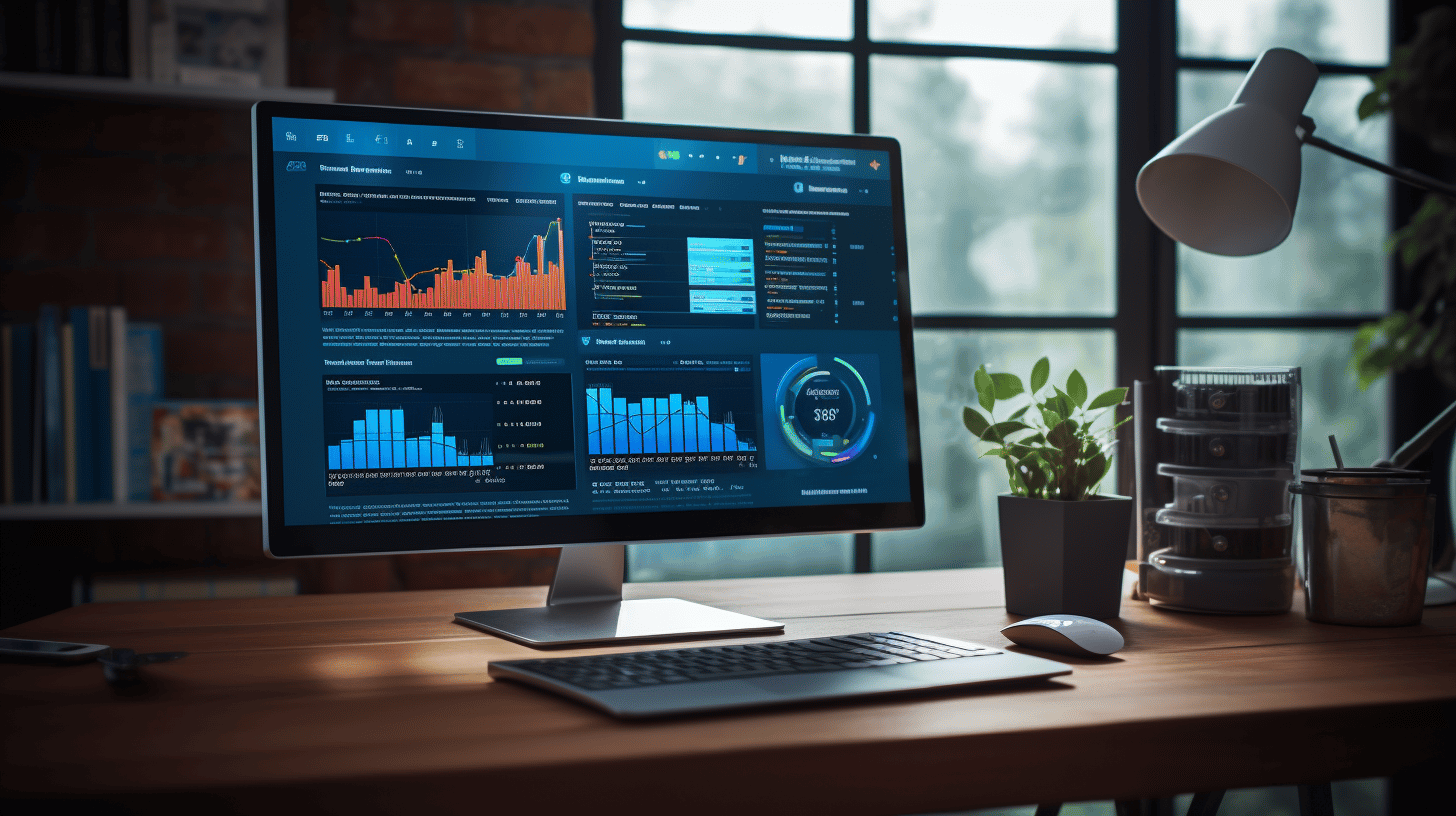WordPress 无疑是世界上最受欢迎、使用最广泛的内容管理系统 (CMS) 之一。凭借其用户友好的界面、丰富的自定义选项和强大的功能,WordPress 已成为希望建立强大在线形象的个人、企业甚至大型企业的首选。
但与任何其他软件一样,WordPress 需要定期更新以确保最佳性能、安全性以及与最新技术的兼容性。在本文中,我们将探讨保持 WordPress 网站更新的重要性,以及您可以采取哪些步骤来确保顺利更新而不会破坏您网站的功能。
因此,如果您是 WordPress 网站所有者或管理员,请系好安全带,准备学习如何通过掌握 WordPress 更新来保持网站平稳运行。从了解 WordPress 的市场存在到不更新的影响以及确保更新过程顺利进行的最佳做法,我们为您提供了全方位的服务。
让我们开始吧!🚀
了解 WordPress 的市场地位
在网站创建和管理领域不断发展的今天,WordPress 已成为主导者。其广泛的知名度和广泛的市场占有率使其成为内容管理系统 (CMS) 行业的巨头。让我们来探索一些关键统计数据和见解,以了解 WordPress 的市场地位。
WordPress 使用情况统计
截至 2024 年,WordPress 为互联网上 43% 的网站提供支持[1]。这一惊人的数字证明了全球个人、企业和组织对 WordPress 的广泛采用和信任。凭借其用户友好的界面和丰富的主题和插件库,WordPress 已成为网站创建和管理的首选平台。
市场份额
WordPress 在 CMS 领域的市场份额非常可观。事实上,它在 CMS 市场中占据了 62.5% 的主导地位[1]。这种主导地位证明了该平台的多功能性、可扩展性和稳健性。无论您是博主、电子商务企业家还是大型企业,WordPress 都能提供满足您特定需求的解决方案。
新站点率
为了进一步凸显 WordPress 的影响力,每天有超过 500 个新网站在该平台上建立[1]。这个惊人的数字表明了 WordPress 生态系统的持续增长和扩张。随着采用速度如此之快,很明显用户已经认识到并欣赏 WordPress 为其在线形象带来的价值。
电子学习插件热潮
WordPress 的覆盖范围超出了传统网站。特别是,其电子学习插件的受欢迎程度显著上升。仅在 2024 年,这些插件的下载量就增加了惊人的 50%[1]。这种激增表明对在线教育平台的需求不断增长,以及 WordPress 作为托管此类门户网站的平台的适用性。
总之,WordPress 的市场地位是不可否认的。它的广泛使用、主导的市场份额、持续增长以及在电子学习等领域的受欢迎程度都为其作为领先的 CMS 解决方案的声誉做出了贡献。如果您想创建一个脱颖而出的专业网站,请考虑利用 WordPress 的强大功能[2].
过时的 WordPress 网站及其漏洞
🔒 网站所有者请注意!您的 WordPress 网站是最新版本吗? 🔒
在当今的数字环境中,维护安全的网站至关重要。WordPress 是最受欢迎的内容管理系统 (CMS) 之一,也不例外。不幸的是,许多网站所有者忽视了更新他们的 WordPress 网站,导致其容易受到潜在的网络威胁。在本节中,我们将探讨 WordPress 网站过时的原因以及不更新网站的影响。
WordPress 网站过时的原因
更新 WordPress 网站似乎是一项繁琐的任务,但忽视它可能会造成严重后果。以下是网站所有者经常发现自己使用过时的 WordPress 版本的几个原因:
- 缺乏意识: 网站所有者可能没有意识到更新 WordPress 网站的重要性。他们可能没有意识到运行过时软件可能带来的安全风险。
- 担心破坏网站: 一些网站所有者担心更新 WordPress 可能会导致其当前主题或插件出现兼容性问题。因此,他们避免更新,以防止对其网站功能造成任何干扰。
- 技术知识有限: 管理和更新 WordPress 网站需要一定的技术专业知识。一些网站所有者可能缺乏执行定期更新所需的技能或资源。
不更新的后果
忽视更新 WordPress 网站可能会使其容易受到各种安全漏洞的攻击。以下是一些令人大开眼界的统计数据,突显了过时的 WordPress 网站的影响:
- 📊 其中 44% 的成功黑客攻击是由于 WordPress 网站过时造成的。
- 📊 三分之二的网站仍然依赖旧版 WordPress,并且经常无法安装更新。
让我们仔细看看不更新 WordPress 网站的后果:
- 安全漏洞: 旧版本的 WordPress 更容易出现安全漏洞。黑客会积极寻找旧版本中的漏洞进行利用,从而可能未经授权访问敏感信息或注入恶意代码。
- 缺乏兼容性: 运行旧版 WordPress 可能会导致与新主题和插件出现兼容性问题。因此,您的网站设计、功能和用户体验可能会受到影响。
- 性能和速度问题: 更新通常包括性能改进和错误修复。如果不更新 WordPress 网站,您可能会遇到性能问题,从而降低网站的加载速度和整体性能。
为了确保 WordPress 网站的安全性和稳定性,定期更新核心 WordPress 软件以及您安装的任何主题或插件至关重要。通过这样做,您可以领先一步预防潜在的漏洞,并为用户提供无缝的浏览体验。
🔐 了解有关 WordPress 维护中的网站安全问题的更多信息。 🔐
定期更新 WordPress 的重要性
👋简介:
定期更新是维护健康安全的 WordPress 网站的关键方面。通过掌握最新更新,您可以保护您的网站免受安全漏洞的侵害,提高性能,并确保与新特性和功能的兼容性。在本节中,我们将深入探讨 WordPress 更新的频率以及它们如何帮助保护您的网站免受潜在攻击。
WordPress 更新频率:
WordPress 是一个动态平台,不断发展以满足数字领域不断变化的需求。核心软件经常更新,通常每年更新两到三次。这些更新旨在解决安全漏洞、修复错误并引入新功能。通过保持 WordPress 安装最新,您可以获得以下好处:
- 增强安全性:WordPress 更新通常包含可防止潜在漏洞或漏洞的安全补丁。随着网络威胁不断演变,及时更新以保护您的网站变得至关重要。
- 提高性能:更新还可以通过优化代码、简化流程和提高整体速度来优化网站的性能。更快的网站不仅可以改善用户体验,还可以提高搜索引擎排名。
- 与主题和插件的兼容性:WordPress 更新确保与最新版本的主题和插件兼容。随着开发人员发布其产品的更新,保持 WordPress 安装更新至关重要,以避免兼容性问题和潜在冲突。
- 访问新功能:每次更新,WordPress 都会引入新功能,以增强用户体验并扩展您网站的功能。通过保持更新,您将不会错过可能对您的网站有益的令人兴奋的新功能。
保护网站免受攻击:
网络安全威胁是当今数字领域持续关注的问题。WordPress 作为最受欢迎的内容管理系统 (CMS),成为黑客的诱人目标。定期更新 WordPress 在保护您的网站免受潜在攻击方面发挥着至关重要的作用。原因如下:
- 修补漏洞:更新通常包括专门设计用于解决 WordPress 社区或安全研究人员发现的漏洞的安全补丁。这些漏洞可能包括小错误,也可能是网络犯罪分子可能利用的严重漏洞。通过及时应用更新,您可以修补这些漏洞并增强网站的安全性。
- 安全性和插件兼容性:除了核心更新外,插件和主题也需要频繁更新以降低安全风险。过时的插件可能会造成安全漏洞并允许未经授权访问您的网站。定期更新 WordPress 可确保您使用的插件和主题也是最新的,从而降低潜在攻击的风险。
- 网站声誉:网站被黑客入侵不仅会带来重大安全风险,还会损害您的品牌声誉。访问者可能会失去对您的网站的信任,影响您的信誉并可能导致业务损失。通过定期更新 WordPress 并实施最新的安全措施,您可以展示对安全可靠的在线环境的承诺。
根据最近的数据,大约 30.8% 的网站没有使用我们监控的任何 CMS,这意味着存在潜在的漏洞。保持 WordPress 安装最新是一种主动措施,可以保护您的网站免受网络威胁并保持其完整性。请记住,预防总是比处理安全漏洞的后果更好。
🔒 保持安全,保持更新!
确保 WordPress 更新顺利
引入新功能、修复错误和增强安全性只是 WordPress 定期发布更新的几个原因。但是,如果没有适当的准备和预防措施,这些更新有时可能会导致意外问题。为确保您的 WordPress 网站的更新过程顺利进行,请遵循以下基本步骤:
更新前备份📂
在进行任何更新之前,创建整个 WordPress 网站的备份至关重要。备份可作为安全网,以防在更新过程中出现问题。以下是创建备份的方法:
- 手动备份:手动下载所有网站文件并使用 phpMyAdmin 或 cPanel 等工具导出数据库。此备份方法需要技术知识,并且可能很耗时。
- 自动备份:使用可靠的 WordPress 备份插件(例如 UpdraftPlus 或 BackupBuddy)来简化备份过程。这些插件允许您安排定期备份并将其安全地存储在 Dropbox 或 Google Drive 等云存储服务上。
选择合适的 WordPress 托管服务提供商
您的 WordPress 托管服务提供商在网站的稳定性和性能方面起着至关重要的作用,尤其是在更新期间。寻找提供以下服务的托管服务提供商:
- 自动更新:确保您的托管服务提供商自动将 WordPress 核心、插件和主题更新到最新的稳定版本。此功能可降低兼容性问题的风险并确保您的网站安全。
- 暂存环境:临时环境允许您创建实时网站的副本,以便在实施更新之前测试更新。这是在不影响实时网站的情况下识别和解决任何潜在问题的绝佳方法。
- 24/7技术支持:选择提供可靠且响应迅速的客户支持的托管服务提供商。如果出现任何与更新相关的问题,您可以立即寻求帮助以最大限度地减少停机时间。
安装正确的安全插件
更新 WordPress 网站时,安全性应是重中之重。安装和配置正确的安全插件可以帮助保护您的网站免受恶意软件、暴力攻击和其他安全漏洞的侵害。考虑使用以下插件:
- Wordfence:一个全面的安全插件,提供恶意软件扫描、防火墙保护和登录安全等功能,以加强您网站的防御能力。
- 苏库里:Sucuri 是一个基于云的安全平台,可提供针对 DDoS 攻击、恶意软件感染和网站黑名单的强大保护。
- iThemes 安全:该插件以前称为 Better WP Security,提供一系列安全功能,包括双因素身份验证、文件完整性检查和暴力破解保护。
更新后测试网站🧪
在对 WordPress 网站应用更新后,彻底测试其功能和外观以确保一切运行顺利至关重要。以下是在测试阶段要遵循的几个步骤:
- 检查网站加载时间:使用 GTmetrix 或 Pingdom 等工具来测量您网站的加载时间。如果更新后加载时间显著增加,则可能存在需要解决的性能问题。
- 测试基本功能:测试导航菜单、联系表单和搜索功能等基本功能,以确保它们正常运行。
- 检查跨浏览器兼容性:验证您的网站是否能在不同的网络浏览器(例如 Chrome、Firefox、Safari 和 Internet Explorer)上正确显示并正常运行。
- 审查移动响应能力:随着移动浏览的日益普及,请确保您的网站在各种移动设备和屏幕尺寸上都能正常显示和运行。
通过遵循这些步骤,您可以降低与 WordPress 更新相关的风险,并确保更新过程顺利无忧。请记住,务必备份您的网站,选择可靠的托管服务提供商,优先考虑安全性,并在更新后彻底测试您的网站。祝您更新愉快!
结论
总之,保持 WordPress 网站更新对于其安全性、性能和整体成功至关重要。通过定期更新 WordPress 核心、主题和插件,您可以确保您的网站免受漏洞和攻击。
为了使更新过程更加顺畅,请务必遵循以下基本步骤:
- 更新前备份: 在执行任何更新之前,请务必备份您的网站。这样,如果在更新过程中出现问题,您可以轻松恢复到网站的先前版本。
- 选择正确的 WordPress 托管服务提供商: 选择可靠且安全的托管 WordPress 托管服务提供商,例如 Managed-WP.™。他们提供可简化基础设施的优质平台,并提供专业的 24/7/365 WordPress 支持、备份管理、补丁管理和主动监控。 了解更多 了解他们的服务。
- 安装正确的安全插件: 通过安装可防御常见威胁和漏洞的安全插件来增强 WordPress 网站的安全性。这些插件可以帮助检测和阻止恶意活动,增强网站的防御能力,并确保数据安全。
- 更新后测试网站: 完成更新后,必须彻底测试您的网站,以确保一切正常运行。检查是否有任何损坏的链接、格式问题或可能由更新引起的功能问题。
通过遵循这些最佳实践并投资正确的工具和服务,您可以保持 WordPress 网站平稳运行,保护其免受潜在威胁,并为访问者提供出色的用户体验。积极主动地维护您的网站,您将获得安全和优化的在线形象带来的好处。
常见问题
- 为什么保持 WordPress 及其插件更新很重要?
保持 WordPress 及其插件更新对于确保网站安全、修复错误和软件漏洞、提高性能以及访问新特性和功能非常重要。
- 我应该多久更新一次 WordPress 及其插件?
建议在有新更新时立即更新 WordPress 及其插件。定期更新有助于维护网站的安全性和稳定性。
- 更新 WordPress 及其插件之前应采取哪些预防措施?
在更新 WordPress 及其插件之前,建议备份您的网站,暂时禁用缓存插件,并检查新更新与您当前主题和插件的兼容性。
- 如果我的网站在更新 WordPress 或插件后崩溃了怎么办?
如果您的网站在更新 WordPress 或插件后崩溃,则可能是由于主题或插件之间的冲突。您可以尝试禁用最近更新的插件或切换到默认主题来识别问题。如果需要,您可以从更新前的备份中恢复您的网站。
- 如何在更新过程中保证我的网站的安全?
为了在更新过程中保证网站安全,建议在将更新应用到实际网站之前使用暂存环境来测试更新。此外,安装安全插件、启用自动更新以及制定定期备份策略可以帮助保护您的网站。



















